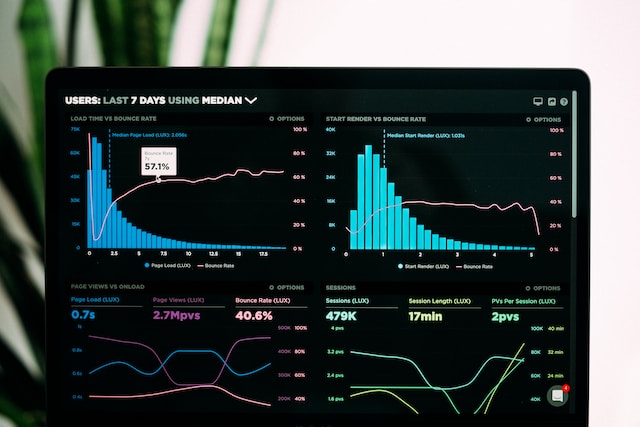
The Digital Cartography of Web Navigation
Imagine standing at the entrance of a massive library, where millions of books are stacked in intricate, interconnected shelves. Each book represents a webpage, and finding specific information feels like searching for a needle in an endless haystack. This is precisely where sitemap crawlers emerge as your digital navigators, transforming chaotic web landscapes into structured, comprehensible territories.
The Evolution of Web Mapping
Web crawling has undergone a remarkable transformation since the early days of the internet. What began as rudimentary search algorithms has now evolved into sophisticated mapping technologies that can dissect complex digital ecosystems with surgical precision. Sitemap crawlers represent the pinnacle of this technological progression, offering unprecedented insights into website structures and content relationships.
Understanding Sitemap Crawlers: More Than Just Technical Tools
Sitemap crawlers are not merely technical instruments; they are intelligent systems designed to decode the intricate language of websites. These advanced tools go beyond simple URL extraction, providing comprehensive insights into website architectures, content hierarchies, and interconnected digital landscapes.
The Technical Mechanics Behind Sitemap Crawling
At their core, sitemap crawlers operate through a complex series of algorithmic processes. They begin by parsing XML or HTML sitemaps, which serve as digital roadmaps for websites. These sitemaps contain critical information about page locations, update frequencies, and relative importance within a website‘s structure.
Modern crawlers utilize multi-threaded processing capabilities, allowing simultaneous exploration of multiple website sections. This approach dramatically reduces extraction time while maintaining high accuracy and comprehensive coverage.
The Technological Ecosystem of Sitemap Crawlers
Advanced Parsing Technologies
Contemporary sitemap crawlers leverage cutting-edge technologies to navigate web environments:
Machine Learning Integration
Artificial intelligence algorithms now enable crawlers to predict website structural changes, optimize crawling strategies, and enhance data extraction accuracy. These intelligent systems can adapt to dynamic web environments, learning from each crawling session to improve future performance.Semantic Understanding Modules
Beyond simple URL extraction, modern crawlers incorporate semantic analysis techniques. These advanced modules can interpret context, understand content relationships, and extract nuanced information that traditional tools might overlook.
Top Sitemap Crawler Tools: A Comprehensive Analysis
ScrapeBox Pro: The Professional‘s Choice
ScrapeBox has long been recognized as a premier solution in the web scraping landscape. Its sophisticated architecture allows for complex multi-domain URL extraction and provides robust filtering mechanisms that go far beyond basic crawling techniques.
Key strengths include its ability to generate RSS XML feeds and perform intricate website mapping with minimal user intervention. Professional SEO experts and digital marketers consistently rely on ScrapeBox for comprehensive website analysis.
WebScraper.io: Democratizing Web Extraction
WebScraper.io represents a significant leap in making web scraping accessible to non-technical users. Its browser-based interface and intuitive design allow individuals with minimal technical background to perform complex web extraction tasks.
The platform supports advanced features like Ajax website compatibility and compressed sitemap processing, bridging the gap between professional-grade tools and user-friendly interfaces.
Ethical Considerations in Web Crawling
As web crawling technologies become increasingly sophisticated, ethical considerations have emerged as a critical component of responsible data extraction. Respecting website owners‘ intentions, adhering to robots.txt guidelines, and maintaining transparent data usage practices are no longer optional—they are fundamental requirements.
Developing Responsible Crawling Practices
Successful web scraping professionals understand that ethical considerations are not constraints but opportunities to build trust and develop more sophisticated extraction methodologies. This involves:
- Implementing intelligent rate limiting
- Seeking explicit permissions when necessary
- Providing clear value propositions for data extraction
- Maintaining transparency in data collection processes
Market Dynamics and Future Projections
The global sitemap crawler market is experiencing unprecedented growth, driven by increasing digital transformation across industries. Projected market valuations suggest a robust expansion, with estimated revenues reaching [~$1.2 billion] by 2025.
Emerging Technological Trends
Several key technological trends are reshaping the sitemap crawling landscape:
AI-Powered Extraction
Machine learning algorithms are becoming increasingly sophisticated, enabling more intelligent and context-aware crawling strategies.Distributed Crawling Infrastructure
Cloud-based technologies are allowing for more scalable and efficient web mapping techniques, reducing processing times and increasing accuracy.Privacy-Focused Technologies
With growing data protection regulations, crawlers are developing more nuanced approaches to data collection and processing.
Practical Implementation Strategies
Building a Robust Crawling Workflow
Successful web scraping requires more than just selecting the right tools. Developing a comprehensive workflow involves:
- Thorough preliminary research
- Selecting appropriate crawling technologies
- Implementing robust error handling
- Maintaining comprehensive logging systems
- Continuously refining extraction methodologies
Conclusion: Navigating the Future of Web Extraction
Sitemap crawlers represent a critical technological frontier, transforming how we understand and interact with digital information landscapes. As web architectures become increasingly complex, these tools will continue evolving, offering unprecedented capabilities for data discovery and analysis.
The future belongs to those who can effectively navigate, understand, and extract meaningful insights from the vast digital ecosystems surrounding us.
Final Recommendations
- Invest in continuous learning
- Stay adaptable to technological shifts
- Prioritize ethical crawling practices
- Embrace multi-tool strategies
- Maintain a curious and innovative mindset
Your journey into the world of sitemap crawlers is just beginning—and the possibilities are truly limitless.










